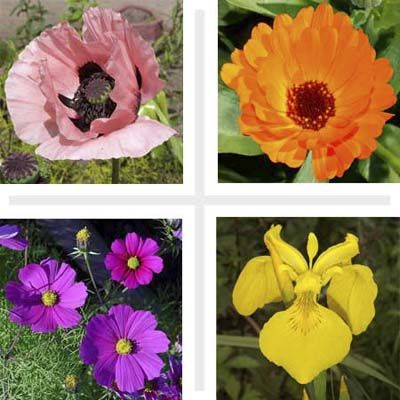
Fresh-cut flower arrangements bring beauty and joy to any space. Instead of buying expensive floral deliveries, start your own cutting garden with fast-growing flowers. Many of these quick-growing blooms are low-maintenance, drought-tolerant, and attract beneficial animals such as butterflies, birds, and pollinator bees. Some even help deter pests that can eat away at your garden. Whether you’re looking to fill bare spots or create stunning arrangements, these fast-growing flowers are the perfect solution. Our guide explores 15 fast-growing flower varieties that will add stunning blooms to your yard or garden in no time. Make sure to find flowers that will thrive in your USDA Plant Hardiness Zone.
1. Pot Marigold (Calendula officinalis)
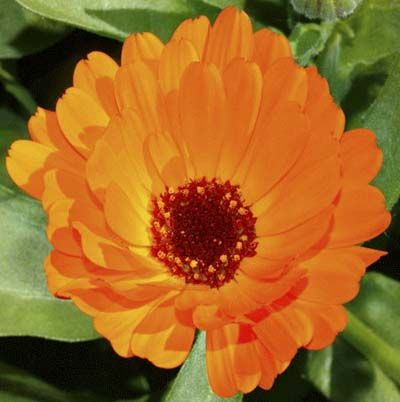
Pot marigold, or Calendula officinalis, is a versatile annual flower that can grow up to 30 inches tall. It has bright green foliage, sturdy stems, and vibrant 3-inch blooms in a range of citrusy colors from light yellow to bright orange. Some varieties have dark centers, while others match the bloom color. This hardy plant thrives in USDA Zones 4-11.
Like their French marigold cousins, they can be planted in vegetable gardens to keep pests away. Calendula also has medicinal properties and can relieve certain insect stings. In the kitchen, the edible leaves can add a peppery flavor to stews and salads.
2. Cosmos (Cosmos bipinnatus)
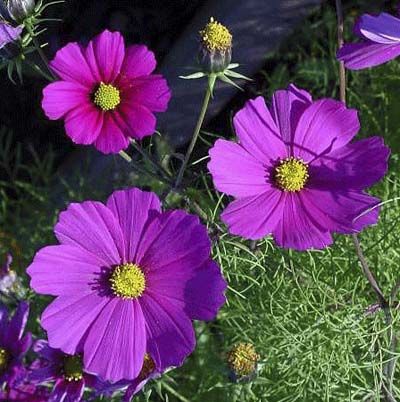
Cosmos are long-stemmed garden annuals that can reach heights of up to six feet. These adaptable plants thrive even in poor soil conditions, making them a great choice for novice gardeners. Cosmos has delicate, sprig-like foliage and produces stunning blooms up to three inches across. Available in various colors such as reds, whites, pinks, and purples, they are a favorite in butterfly gardens and grow well in USDA Zones 5-10.
Avoid over-fertilizing cosmos, which can suppress flower production. Focus on providing well-draining soil and full sun exposure. Cosmos is also a charming addition to flower arrangements, as its size and colors can give life and variety to a bouquet.
3. Mexican sunflower (Tithonia rotundiflora)
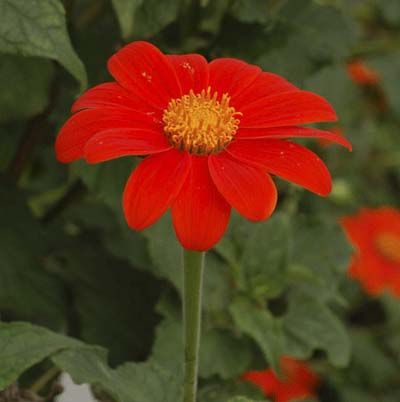
Mexican sunflowers, or Tithonia rotundiflora, are striking annuals that can grow up to 6 feet tall with 3-inch, bright red-orange blooms that attract pollinators. They feature deep green, coarse foliage and multiple stems per plant. One of the fastest-growing flowers, Mexican sunflowers can complete two generations in a single summer, excellent for gardeners who want quick results.
When planting Mexican sunflowers, be sure to give them ample space, as a single plant can grow into a 4-foot-wide cluster. They thrive in USDA Zones 4-10 and require full sun for the best growth.
4. Yellow flag iris (Iris pseudacorus)
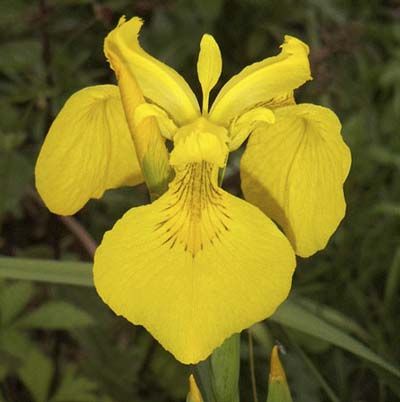
Yellow flag iris features gray-green sword-shaped leaves and large yellow blooms measuring up to 4 inches across. These perennials can grow as tall as 4 feet and often produce four or more early spring blooms on each stalk. Yellow flag iris adapts to various moisture conditions, thriving in wetland areas and drier garden beds.
Check with local garden professionals before planting yellow flag, as it may be considered invasive in some areas. In wetlands, it can spread rapidly, but when grown in drier areas, the plants tend to be smaller and less aggressive in their growth habits.
5. Black-eyed Susan (Rudbeckia fulgida var. sullivantii)
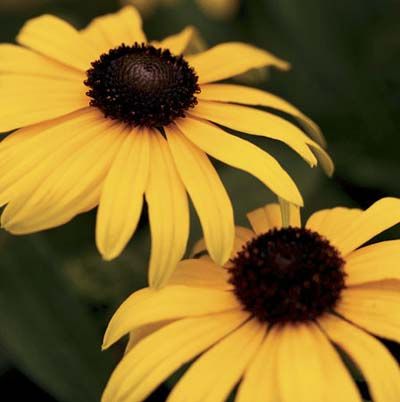
Black-eyed Susan, or Rudbeckia fulgida var. sullivantii, is a hardy perennial that can grow up to 3 feet tall. It features numerous blooms on top of branched stems, with lance-shaped, deep green leaves. The flowers measure about 3 inches across and have distinctive dark centers surrounded by bright yellow petals. These plants spread and form large clumps, with up to 20 vibrant flowers per plant.
Black-eyed Susans have a long blooming period that lasts throughout the summer. Regular cutting encourages new blooms, making them perfect for both garden displays and cut flower arrangements. These flowers also act as a natural deer repellent. Black-eyed Susans thrive in USDA Zones 3-9 and have few care needs.
6. Snapdragon (Antirrhinum majus)
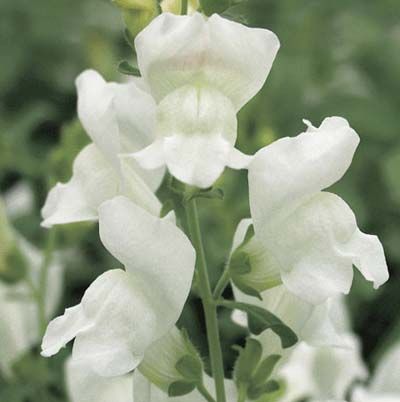
Snapdragons, or Antirrhinum majus, are versatile annuals that grow in a wide range of sizes and colors. They can grow from about 8 inches to 3 feet tall, depending on the variety. These flowers feature small tubular blooms and are available in hundreds of cultivars, offering nearly every color except true blue and black. Snapdragons are well-suited for USDA Zones 4-11, but they prefer cooler temperatures. In zones 9-11, it’s best to plant snapdragons in the winter for growth.
7. Purple coneflower (Echinacea purpurea)
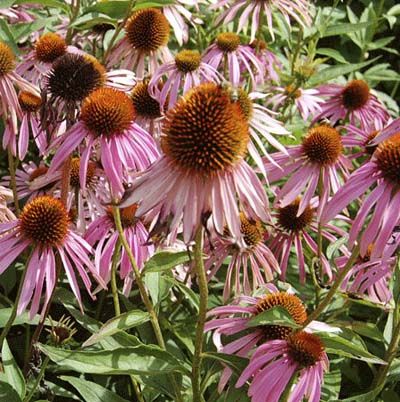
Purple coneflower is a robust perennial that can grow into clumps 3 feet tall and 3 feet wide. The blossoms can measure up to 3 inches across and feature large purplish-brown centers surrounded by lavender to purple petals. This plant has dark green, coarse foliage that adds texture to garden beds.
Echinacea is known for attracting butterflies all summer, making it a valuable addition to pollinator gardens. It’s also resistant to drought, pests, and diseases, making it a low-maintenance choice for busy gardeners. It also may have immune-boosting properties, according to the National Center for Complementary and Integrative Health, and it can be dried and added to tea. Purple coneflower thrives in USDA Zones 3-9.
8. Marigold (Tagetes spp.)
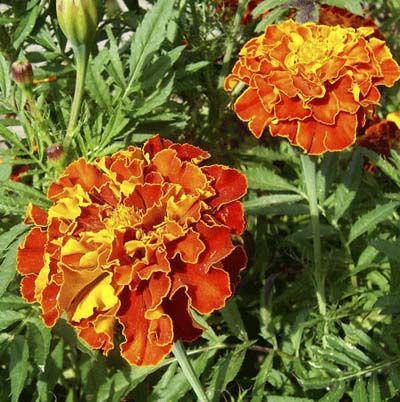
Marigolds come in many varieties and are a versatile choice for cutting gardens. French marigolds (Tagetes patula) typically grow to about 12 inches tall with 2-inch blooms, while other varieties can reach heights of up to 3 feet with 3-inch flowers. These dense plants are available in a range of warm colors, including yellows, oranges, and bronze shades, and the flowers bloom continuously.
Marigolds are particularly useful in vegetable gardens, as they help deter many pests. Gardeners all across the country can enjoy these annual flowers, which thrive in USDA Zones 2-11.
9. Poppy (Papaver somniferum)
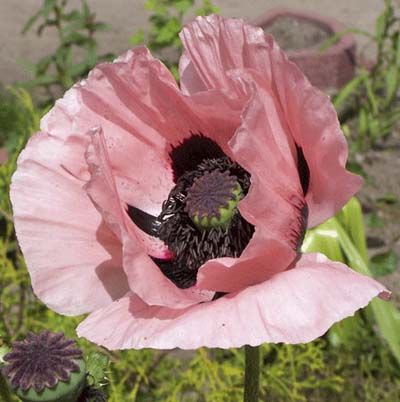
Poppies are known for their scarlet blooms, but they come in over 70 varieties and a range of colors, including white, pink, and mauve. They can grow up to 4 feet tall, 4 inches across, and feature distinctive blue-green foliage.
Poppies thrive in USDA Zones 7-10 and are best cut just before the flowers fully open. Cauterize the stems by holding the tip of each stem in a candle flame for a few seconds before placing them in water. This technique can extend the vase life of these cuttings.
10. Horsemint (Monarda punctate)

Horsemint, or Monarda punctata, is a multi-branched perennial that can grow up to 4 feet tall. It features lance-shaped leaves and produces clusters of small pink to lavender bracts and pale yellow flowers, with up to seven blooms per branch.
Horsemint is well-suited for USDA Zones 5-10 and offers more than just looks. The foliage has a distinctive oregano-like aroma and can be dried to create homemade air fresheners. It also attracts pollinators to help your garden grow.
11. Indigo Spires sage (Salvia ‘Indigo Spires’)
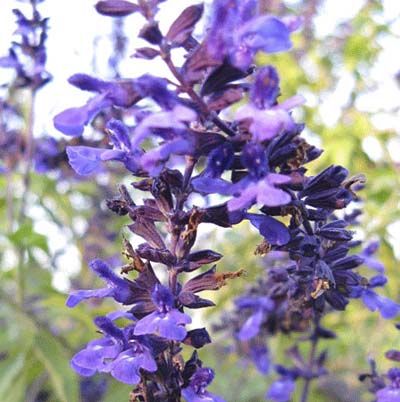
Indigo Spires sage, or Salvia ‘Indigo Spires’, is a stunning perennial that attracts butterflies in the garden. This impressive plant can grow up to 5 feet tall and spread into clusters spanning 5 feet wide or more. It features small blue-violet blooms along about a foot of its length, with long, coarsely toothed foliage. Thriving in USDA Zones 7-11, Indigo Spires sage may require regular pruning in the garden to prevent it from falling under its own weight. This habit makes it a great addition to your cutting garden.
12. Calliopsis (Coreopsis tinctoria)
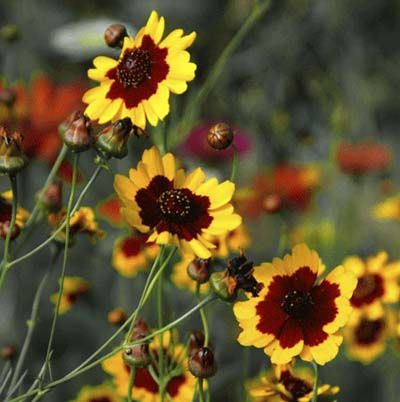
Coreopsis tinctoria is a charming wildflower that can grow up to 4 feet tall, with flowers measuring about 2 inches across. Each stem features multiple branches and blooms, characterized by purple center discs surrounded by bright yellow-tipped petals.
Calliopsis is a drought-tolerant plant that will bloom through autumn, attracting both birds and butterflies to the garden. It thrives in USDA Zones 4-10 and is relatively low-maintenance. Harvest these blooms when the flowers are almost fully opened for the best look in a floral arrangement. Regular deadheading encourages the plant to bloom and flower continuously for beauty year-round.
13. Mums (Chrysanthemum hybrids)
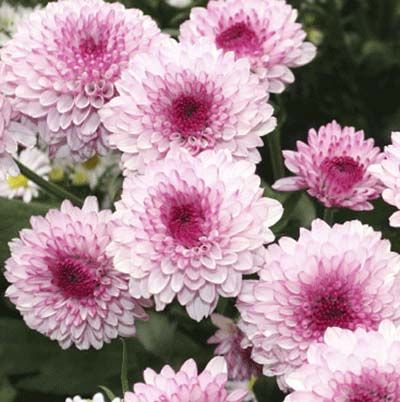
Mums, or Chrysanthemum hybrids, come in a wide variety of bloom shapes and colors, making them a versatile choice for cutting gardens. Colors range from deep burgundy to bright oranges, soft lavenders, pinks, and pure white. Some varieties are low and spreading, while others can grow up to 5 feet tall.
These easy-care plants are disease-resistant and widely available, making them a reliable choice for both novice and experienced gardeners. Mums thrive in USDA Zones 5-9 and come in various shapes, including ball-shaped pompons, spider varieties with long tubular petals, varieties with spoon-shaped petals, and colorful daisy-like single varieties.
14. Purpletop verbena (Verbena bonariensis)
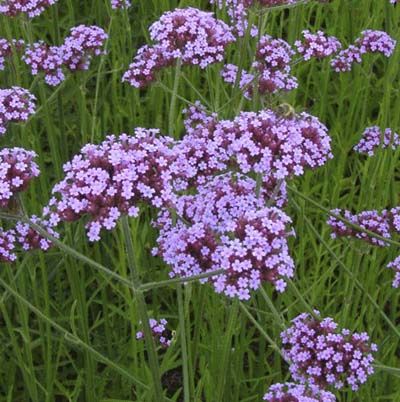
Purpletop verbena is a perennial that is often grown as an annual in colder climates. The plant features small, quarter-inch purple flowers on stiff, coarse stems. It can grow to about 6 feet tall and form clumps about 3 feet wide, adding height and structure to garden beds and cut flower arrangements.
Purpletop verbena blooms all summer long and is relatively drought-tolerant, making it a low-maintenance choice for busy gardeners. It thrives in USDA Zones 7-11 and can be encouraged to branch out by pinching the first shoots in the spring.
15. Nasturtium (Tropaeolum speciosum)
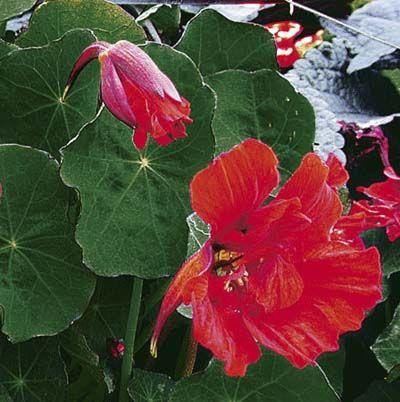
Nasturtium, specifically Tropaeolum speciosum, is an easy-to-grow annual with large, round leaves and vibrant blooms measuring 2 inches across. This plant thrives in poor soil and grows to about a foot tall, making it an excellent choice for container gardens or as a ground cover in cutting gardens.
Nasturtium’s non-toxic nature, large seeds, and rapid growth make it an ideal starter plant for children interested in gardening. It also attracts hummingbirds that pollinate and help your garden grow. Nasturtium is suitable for USDA Zones 4-11 and has edible, peppery-tasting flowers and leaves that can be used to add a unique flavor to salads and other dishes.
